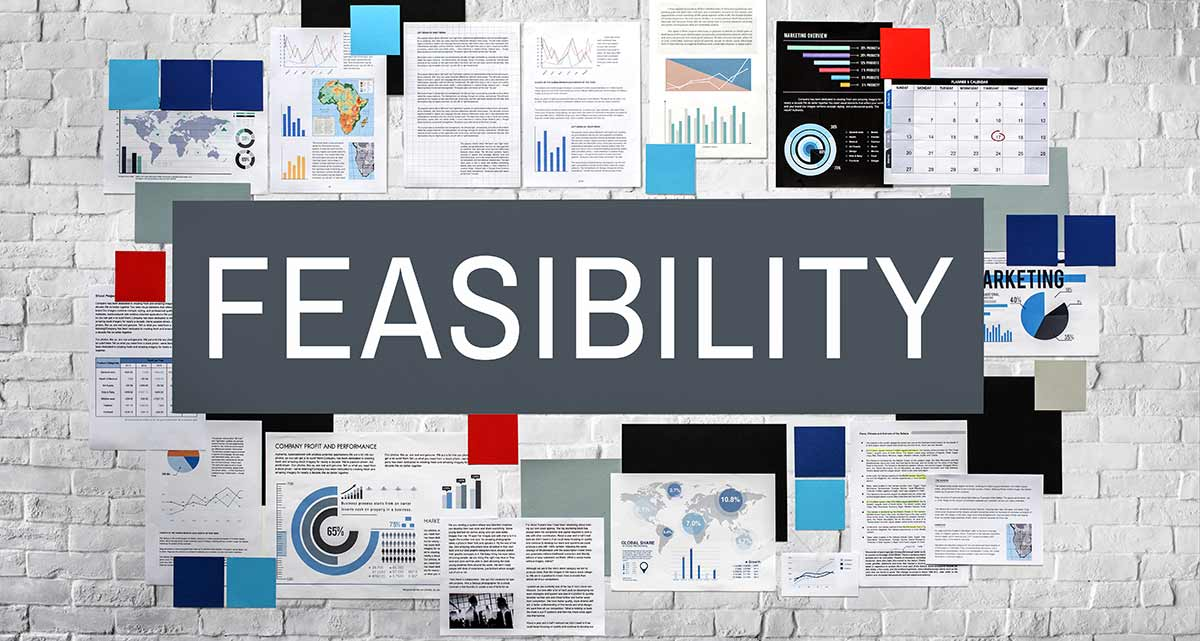
Embarking on a construction project entails a multitude of considerations, with site feasibility analysis standing as a cornerstone in the process. The term “site feasibility” refers to the assessment of whether a particular location is suitable for the intended construction endeavour. This crucial step involves a comprehensive evaluation of various factors, including geographical, environmental, regulatory, and economic aspects. Understanding the significance of site feasibility can profoundly impact the success and sustainability of construction projects.
First and foremost, site feasibility analysis ensures that the proposed construction aligns with the intended purpose and objectives. By meticulously evaluating the site’s characteristics, such as topography, soil conditions, and access to utilities, stakeholders can determine whether the chosen location meets the requirements of the project. This preliminary assessment minimizes the risk of encountering unforeseen challenges during the construction phase, thereby enhancing project efficiency and reducing costly delays.
Moreover, site feasibility studies facilitate informed decision-making by providing stakeholders with valuable insights into the project’s viability. Through thorough research and analysis, potential constraints and opportunities associated with the site are identified and addressed proactively. Whether it involves zoning regulations, environmental concerns, or infrastructure requirements, a comprehensive understanding of these factors enables project developers to devise strategies to mitigate risks and optimize resources effectively.
Furthermore, site feasibility analysis plays a pivotal role in ensuring compliance with regulatory requirements and environmental standards. By assessing the impact of the proposed construction on the surrounding ecosystem, including flora, fauna, and natural habitats, project developers can implement measures to minimize environmental degradation and promote sustainability. Compliance with regulatory frameworks not only fosters ethical and responsible construction practices but also mitigates the risk of legal disputes and penalties.
Beyond regulatory compliance, site feasibility studies contribute to the enhancement of community engagement and stakeholder collaboration. By actively involving local residents, government agencies, and other relevant stakeholders in the decision-making process, project developers can address concerns, solicit feedback, and foster transparency. This inclusive approach not only fosters community goodwill but also ensures that the construction project aligns with the needs and aspirations of the surrounding community.
Moreover, site feasibility analysis enables project developers to assess the economic viability and financial feasibility of the proposed construction. By evaluating factors such as construction costs, market demand, and potential returns on investment, stakeholders can make informed decisions regarding project financing and resource allocation. This financial due diligence minimizes the risk of budget overruns and ensures that the project remains economically viable throughout its lifecycle.
Additionally, site feasibility studies contribute to risk management and mitigation by identifying potential hazards and vulnerabilities associated with the site. Whether it involves geological hazards, natural disasters, or socio-economic risks, a thorough assessment enables stakeholders to implement appropriate risk mitigation measures and contingency plans. By proactively addressing potential risks, project developers can minimize disruptions and safeguard the continuity of construction operations.
Site feasibility analysis is an indispensable component of any construction project, serving as a foundation for informed decision-making and sustainable development. By assessing the suitability, viability, and risks associated with a particular site, stakeholders can optimize resources, mitigate challenges, and enhance the overall success of the project. Embracing a holistic approach to site feasibility not only ensures compliance with regulatory requirements but also fosters community engagement, environmental stewardship, and financial sustainability. As such, investing in site feasibility analysis is essential for realizing the full potential of construction projects and building a better, more resilient future.
Testimonials
We found Draftech’s work to be of high standard and the team delivered exactly as agreed, in fact, when we considered the project complete, Draftech put further resources into the project as they were not satisfied.
John Johnson Beca
Engaging Draftech during design gave us the tools to make smart decisions.
Hansen Yuncken Design Manager - Michael Harkins
The drafting service is timely, reliable and fit for purpose for the built environment.
Peter Harvey Harvey Industries
Draftech stands apart from other drafting services that we have previously used in their attention to detail and ability to adapt to the individual client’s requirements.
Doug Holt McCaig Aircon
I can confidently recommend Draftech as a solid and reliable supplier, and experts in their field. I look forward to working with them again in the near future.
Chris Behan Norman Disney & Young
After seeing the benefits Draftech provided us on the Townsville Hospital Redevelopment we have set up a relationship with Draftech and intend to continue to use their BIM knowledge and skills for our future projects.
Brad Lund Energy Power Systems
Draftech has no competition as they are in a class of their own.
John Boyes Babinda Electrics
Draftech Developments Drafting and Design Capabilities, in conjunction with their outstanding level of Client service and support has provided great solutions to our engineering and Drafting Design portions within our Gorgon Barrow Island Project.
Aaron Hazelton Applied Electro Systems Pty Ltd
Draftech set up necessary systems and workflows very quickly, but also setup auditable estimating and weekly cost tracking processes that we utilised, requiring little maintenance.
TOM PURDON MPM GROUP
Very professional and efficient organization. Delivered a great product to a tight deadline.
ACE Power
Karl and the team are very professional and have a vast knowledge of BIM coordination.
Dwayne Willaims Babinda Electrics
We had multiple large projects with tight deadlines and needed a company we could trust. The teams delivery, attention to detail and understanding of what is being designed is always executed to a high standard.
Martin O’Donovan Envar Engineers
Draftech offered a flexible and reliable approach to working collaboratively with our team. They met our expectations and quality requirements and also offered up new ideas.
Draftech have proven to be a valuable and trustworthy resource and we will continue to work with Draftech on other projects.
Simon Marsden Umow Lai
Draftech is different from others in the professionalism and features they provide.
The ability to walk through projects in real time online provides invaluable insight into problem areas and helps provide an efficient resolution on the spot without many phone calls, emails and the necessity for us to paw through countless drawings to understand the issues.
Todd Morris Manager - Air mech
Draftech were put forward to FIP Electrical as the solution to Coordinate, Model, carry out clash detection, provide Electrical Services Shop Drawings, as built documentation and completed electrical model.
Simon Thorpe FIP Electrical
In close collaboration Draftech set up all our systems and model deliverables. In this process Draftech have proven to be a valuable resource for us and demonstrated commitment, understanding and professionalism.
David Skelley DJCoalition
Draftech’s attention to detail and proactive nature throughout the project assisted us in identifying issues before becoming evident on site, saving us both time and unexpected costs.
Matt Payne PJM Engineering Services
They delivered very high quality Revit models and associated 2D documentation at key milestones, working to a tight budget and in strict accordance with the Architects’ BIM requirements.
Peter Thomas Geoff Hesford
We found Draftech’s work to be of high standard and the team delivered exactly as agreed, in fact, when we considered the project complete, Draftech put further resources into the project as they were not satisfied.
John Johnson Beca
Engaging Draftech during design gave us the tools to make smart decisions.
Hansen Yuncken Design Manager - Michael Harkins
The drafting service is timely, reliable and fit for purpose for the built environment.
Peter Harvey Harvey Industries
Draftech stands apart from other drafting services that we have previously used in their attention to detail and ability to adapt to the individual client’s requirements.
Doug Holt McCaig Aircon
I can confidently recommend Draftech as a solid and reliable supplier, and experts in their field. I look forward to working with them again in the near future.
Chris Behan Norman Disney & Young
After seeing the benefits Draftech provided us on the Townsville Hospital Redevelopment we have set up a relationship with Draftech and intend to continue to use their BIM knowledge and skills for our future projects.
Brad Lund Energy Power Systems
Draftech has no competition as they are in a class of their own.
John Boyes Babinda Electrics
Draftech Developments Drafting and Design Capabilities, in conjunction with their outstanding level of Client service and support has provided great solutions to our engineering and Drafting Design portions within our Gorgon Barrow Island Project.
Aaron Hazelton Applied Electro Systems Pty Ltd
Draftech set up necessary systems and workflows very quickly, but also setup auditable estimating and weekly cost tracking processes that we utilised, requiring little maintenance.
TOM PURDON MPM GROUP
Very professional and efficient organization. Delivered a great product to a tight deadline.
ACE Power
Karl and the team are very professional and have a vast knowledge of BIM coordination.
Dwayne Willaims Babinda Electrics
We had multiple large projects with tight deadlines and needed a company we could trust. The teams delivery, attention to detail and understanding of what is being designed is always executed to a high standard.
Martin O’Donovan Envar Engineers
Draftech offered a flexible and reliable approach to working collaboratively with our team. They met our expectations and quality requirements and also offered up new ideas.
Draftech have proven to be a valuable and trustworthy resource and we will continue to work with Draftech on other projects.
Simon Marsden Umow Lai
Draftech is different from others in the professionalism and features they provide.
The ability to walk through projects in real time online provides invaluable insight into problem areas and helps provide an efficient resolution on the spot without many phone calls, emails and the necessity for us to paw through countless drawings to understand the issues.
Todd Morris Manager - Air mech
Draftech were put forward to FIP Electrical as the solution to Coordinate, Model, carry out clash detection, provide Electrical Services Shop Drawings, as built documentation and completed electrical model.
Simon Thorpe FIP Electrical
In close collaboration Draftech set up all our systems and model deliverables. In this process Draftech have proven to be a valuable resource for us and demonstrated commitment, understanding and professionalism.
David Skelley DJCoalition
Draftech’s attention to detail and proactive nature throughout the project assisted us in identifying issues before becoming evident on site, saving us both time and unexpected costs.
Matt Payne PJM Engineering Services
They delivered very high quality Revit models and associated 2D documentation at key milestones, working to a tight budget and in strict accordance with the Architects’ BIM requirements.
Peter Thomas Geoff Hesford


























































